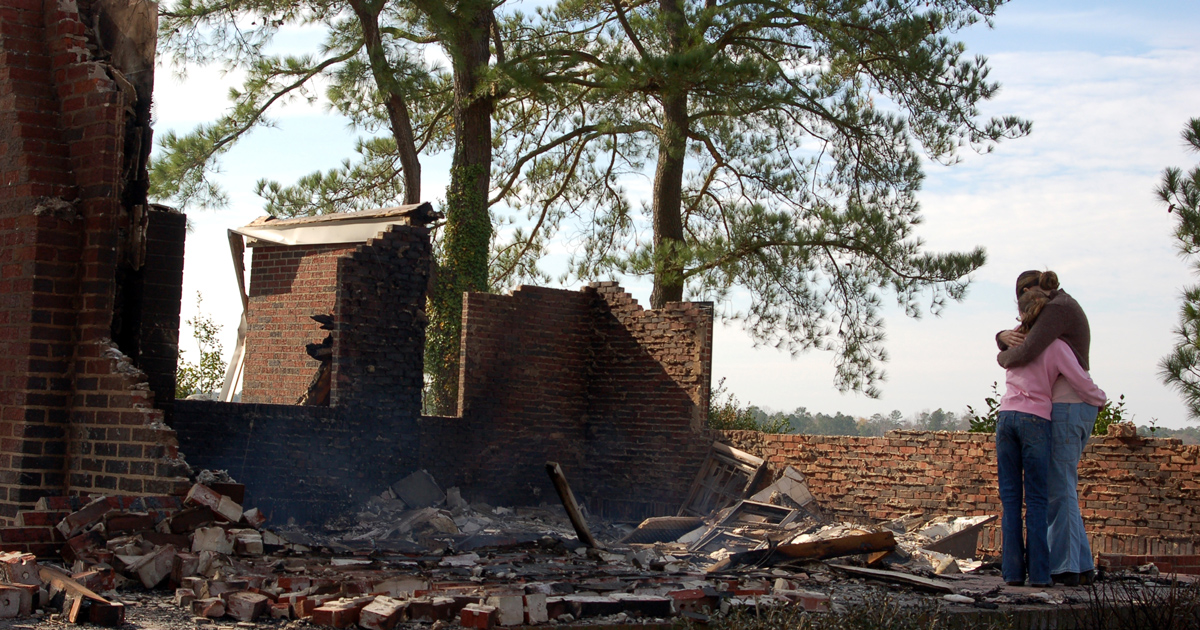
Lyn Formica
Head of Education & Content
The recent bushfires across Australia have impacted many thousands of individuals and small businesses and prompted an outpouring of generosity at levels never before seen in this country. We’ve since had multiple inquiries from clients whose SMSF has been negatively affected or who’d like to use their SMSF monies to help others.
In this article we cover SMSF owned assets, aimed not just at the recent bushfires but any national disaster across the country.
You might also be interested to read:
Download the complete 'Super and natural disasters' fact sheet.
SMSF owned assets
One of the risks of investing in property is the asset’s vulnerability to damage, with the potential to impact both rental income and capital returns.
My client’s SMSF owns property which has been damaged or destroyed. What do I need to watch out for?
- Firstly, it will be important for the trustees to identify exactly what the SMSF owned and what the trustee is responsible for repairing/replacing. For example, the property itself may have been owned by the fund but there may have been other assets used in connection with the property which are owned by/the responsibility of the tenant. This will usually be evident from the lease and the original purchase documentation. The fund’s auditor should have a copy of these even if the originals have been lost. It would be difficult to justify having the SMSF pay for repairs to anything that is legally the responsibility of the tenant (see our comments below on helping others with SMSF money). In contrast, the SMSF is of course obliged to make good any assets it is responsible for if this is what the lease requires.
- Where the asset was insured, any insurance proceeds received will need to be paid to the owner of the asset. The tax treatment of any insurance proceeds will depend upon what the proceeds are replacing. For example:
- If covering loss of rent, the proceeds are generally ordinary assessable income of the fund.
- If in respect of depreciable assets, an amount may be assessable/deductible depending on the written down value of the asset (ie a balancing adjustment).
- If in respect of capital items (ie CGT assets), the CGT provisions will generally determine the amount of any cost base adjustments, and the capital gain or loss incurred.
- Where the property has been damaged to such an extent that the tenant is no longer able to use all or part of it, it is likely there will need to be an adjustment made to the rent payable. The fund’s lease agreement may specifically detail what is to happen in these situations. Alternatively, the local estate agent may be able to provide information on the approach taken by other landlords in similar situations. The trustee will need to make sure the approach they take is commercial and documented, particularly if the tenant is a related party of the fund.
In our view, related party tenants should not continue to pay full rent to the fund on a property where there is material damage to the capability they were renting. For example, if the landlord was responsible for fencing and this has all been destroyed, the farmer may be unable to re-stock. If the tenant paid normal rent despite the landlord (the SMSF) effectively failing to provide the asset in a fit state for use, the rent paid could be considered non-arm’s length income and taxed at 45% (instead of the concessional 15% or nil rate) as the fund’s income would be higher than it would have been if the parties had been acting at arm’s length [ITAA 1997 s.295-550].
- If the SMSF wants to engage a related party to undertake repairs or the building of a replacement asset:
- Whilst it is common place for builders to supply the goods and materials used in the provision of a building service, in an SMSF context, this would breach the acquisition of asset rules [SIS s.66]. This means the related entity must be engaged to provide services only with the fund sourcing the materials directly from third party suppliers or the fund will need to enter into an agency agreement with the related party.
- The arrangement between the SMSF and the related entity must be conducted on arm’s length terms [SIS s.109, ITAA 1997 s.295-550]. This means a contract must be entered into and the contract price must be the same as it would be between two arm’s length parties. The trustee will need to be able to substantiate that the price paid is the same as what would have been charged to third party customers.
The contract terms must also be arm’s length. This means all terms and conditions (eg timing and amount of progress payments, potential action for non-payment etc) must be the same as for third party customers.
- The fund is unable to borrow to finance repairs (unless the asset was purchased under an LRBA) or replacement of the asset [SIS s.67].
- The damage/destruction of a fund asset would usually be a trigger for obtaining a new market valuation of the asset for use in the fund’s financial statements.
Is the situation different if the asset was owned by a bare trust under a limited recourse borrowing arrangement (LRBA)?
Where the asset is owned via an LRBA, there are additional considerations:
- The fund is able to borrow for repairs but not improvements to the asset [SIS s.67A(1)(a)(i), SMSFR 2012/1]. Improvements would need to be sourced from fund monies. For example, if a fire destroyed a three bedroom house (but not the land) owned by a LRBA, the fund could borrow to rebuild the house. However, if the house was extended to four bedrooms when it was rebuilt, this is likely to be considered an improvement with the additional cost needing to be sourced from fund monies.
- However, any improvements must not fundamentally change the character of the asset such that the asset becomes a different asset whilst the LRBA is in place. For example, a fund owned a house and land via a LRBA and the house was destroyed. If the house was replaced with three strata title units, this would be a fundamental change to the character of the asset. This would only be permitted if the debt was repaid and the land transferred to the SMSF before the change took place.
- If the entire asset has been destroyed (eg an item of machinery destroyed by fire), insurance proceeds/fund monies could be used to replace the asset within the fund but it cannot be replaced within the LRBA.
My client’s SMSF owned property is undamaged but the tenant is currently unable to pay the rent. What do I need to watch out for?
Where tenants are unable to meet their obligations under their lease arrangement with the fund (eg because their business profits have been impacted or they have lost their job), the trustee has a number of options.
They could choose to enforce the terms of the lease arrangement and follow the process in the lease agreement to recover any shortfall.
More commonly though, a landlord will agree to a payment plan, rental reduction, rent free period etc particularly where there is a location-wide impact. Trustees may decide that this approach will be cheaper in the long-term than incurring legal costs, finding a brand new tenant etc.
Where the tenant is a related party, it will be essential for trustees to ensure the approach they take is commercial and able to be substantiated [SIS s.109]. As noted above, the local estate agent may be able to provide information on the current market conditions, approach taken by other landlords etc.
Summary
Where superannuation is concerned, particularly SMSFs, it is always important to double-check the rules before taking action. Often the law simply doesn’t allow for the outcome trustees and members desire. If you have other questions for us to consider, let us know so that we can cover more scenarios in future articles.
The Super Companion is an online resource that's regularly updated and will always reflect the latest rules, changes to legislation, case law or regulator views. You can be confident that the information is up to date and accurate. Learn more and subscribe here.
This article is for general information only. It does not constitute financial product advice and has been prepared without taking into account any individual’s personal objectives, situation or needs. It is not intended to be a complete summary of the issues and should not be relied upon without seeking advice specific to your circumstances.


